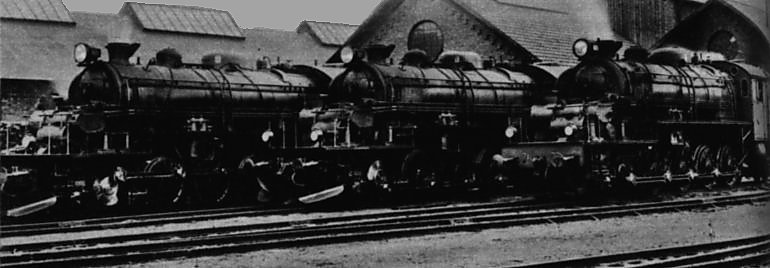Updated: 17 June 2005




The Swedish Turbine Locomotives |
Updated: 17 June 2005
 
|
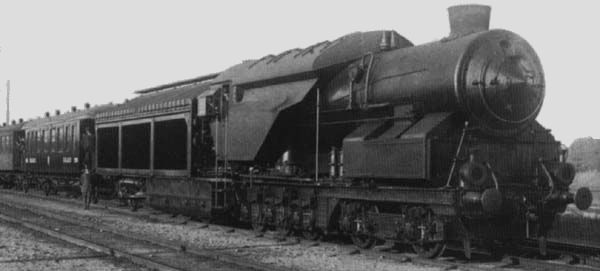 | Left: The Ljungstrom locomotive of 1921
Power: 1800hp nominal |
The Swedish engineer Fredrik Ljungstrom developed a number of experimental steam turbine locomotives. His early designs included condensing tenders intended to give higher efficiency by presenting the turbine exhaust with at least a partial vacuum. However this added greatly to the complications of the machinery.
 | Left: The Ljungstrom locomotive of 1927
Power: 2400hp nominal |
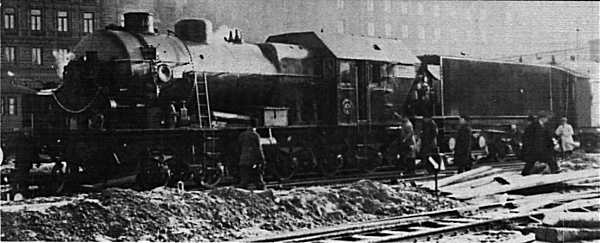 | Left: The Ljungstrom locomotive of 1927
|
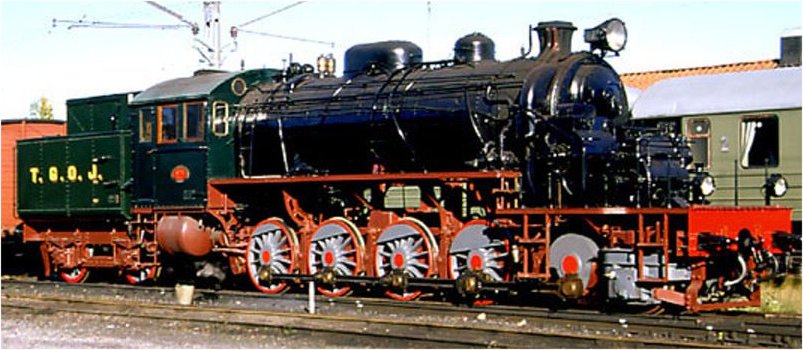
Above: A rare beast: a preserved and operatable steam turbine loco. This is one of the preserved TGOJ locomotives. A forward-mounted turbine drives four pairs of coupled wheels via a jackshaft and connecting rods. (Reproduced by permission)
In 1932, in conjunction with the Nydqvist and Holm company, Fredrik Ljungstrom developed a very successful 2-8-0 steam turbine locomotive, based on an existing conventional design, for freight traffic on the Grangesberg-Oxelsund Railway. (The TGOJ) The main purpose of the TGOJ was the transportation of iron ore from mines around and at Grangesberg to the Baltic port of Oxelosund, a distance of 159 miles (255 km). The first turbine locomotive proved to be more efficient than its conventional sisters; it could pull 1830 tons up a 1 in 100 gradient, and was reckoned to save 10% on fuel. All the engines were non-condensing, with a forward-mounted turbine and jackshaft drive. It was visited by Dr. Guy and William Stanier, and became the inspiration for the LMS Turbomotive.
The mines were worked out, and ore transport finally stopped, in 1990.
Above: Three Swedish TGOJ turbine engines stand at Eskilstuna in 1936. The left and middle engines are fitted with small snowploughs.
Two further locomotives of the same class (M3t) were subsequently built. All were in operation until the mid 1950s when the line on which they operated was electrified. Two of the class are preserved in the Railway Museum at Grangesberg, Sweden.
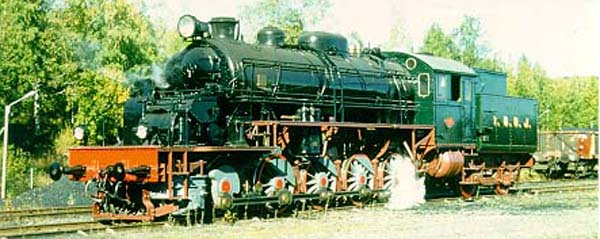
Left: A preserved TGOJ turbine loco in steam.
